MTB
Cross Country
Trail
Downhill
Dirt
Which bike suits you best?
Cross-Country
The best-selling hardtail for off-road and everyday use
Full-suspension carbon race bike for challenging routes
Count Solo
from 511,58 €
from 12.9 kg
Thrill Hill
from 2.356,96 €
from 11.8 kg
Trail
The progressive hardtail for maximum fun on the trail!
The versatile all-rounder for fun on tours and trails
Made for intense lines on technically demanding terrain
Bonero
from 1.331,75 €
from 13.4 kg
Ground Control
from 1.639,31 €
from 13.7 kg
Root Miller
from 2.254,44 €
from 15.2 kg
Downhill
Made for intense lines on technically demanding terrain
Scrub
from 3.382,17 €
from 17.9 kg
Consultation
Do you need help?
MTB Buyer's Guide
The most important facts in brief
The most important facts in brief
If you are new to mountain biking, this can quickly become overwhelming. However, with the right questions, you will quickly get closer
to your goal to find the right mountain bike for you. The following guide will provide you with some answers.
- What terrain will you mainly be riding on?
- Action or endurance: What do you focus on?
- Is a hardtail enough for you or should you choose a fully?
- Do you want to use the MTB also in everyday life?
- What is your budget and what are your preferences?
- How important is a low weight to you?
- Do you want to ride with muscle power only or choose an E-MTB?
If you are new to mountain biking, this can quickly become overwhelming. However, with the right questions, you will quickly get closer to your Goal to find the right mountain bike for you. The following guide will provide you with some answers.
- What terrain will you mainly be riding on?
- Action or endurance: What do you focus on?
- Is a hardtail enough for you or should you choose a fully?
- Do you want to use the MTB also in everyday life?
- What is your budget and what are your preferences?
- How important is a low weight to you?
- Do you want to ride with muscle power only or choose an E-MTB?
Table of contents
- What types of mountain bikes are there?
- The suspension: Hardtail or Fully?
- The frame material: Aluminium or carbon?
- Which wheel size is the right one?
- What is important for the components?
- What role does weight play?
- Which frame size do you need?
- What are the advantages and disadvantages of an E-MTB?
- FAQ
What types of mountain bikes are there?
MTB category
Intended use
Travel
Frame
Features
Cross-Country
(XC Race, Marathon, Down Country)
(XC Race, Marathon, Down Country)
• Training
• Long tours
• Race
• Moderate terrain
• Long tours
• Race
• Moderate terrain
• 80-120 mm
• Hardtail or full suspension
• Light
• Stiff
• Efficient
• Good power transfer
• Stiff
• Efficient
• Good power transfer
Trail
(Tour, All Mountain, Enduro)
(Tour, All Mountain, Enduro)
• Tours
• Trails
• Descents in challenging terrain
• Trails
• Descents in challenging terrain
• 120-180 mm
• Hardtail or full suspension
• Versatile
• Balanced
• Moderate weight
• Comfortable
• Good control
• Balanced
• Moderate weight
• Comfortable
• Good control
Downhill
(Freeride)
(Freeride)
• Fast descents
• Extreme terrain
• Jumps
• Bike park
• Race
• Extreme terrain
• Jumps
• Bike park
• Race
• Full Suspension
• Robust
• Powerful
• Purely downhill-oriented
• True to track
• Relatively heavy
• Powerful
• Purely downhill-oriented
• True to track
• Relatively heavy
Dirt
• Jumps
• Tricks
• Pump track
• Slopestyle
• Street
• Tricks
• Pump track
• Slopestyle
• Street
• 80-120 mm
• Hardtail
• Light
• Robust
• Compact
• Agile
• Only for jumps and tricks
• Small 26" wheels
• Only one gear
• Robust
• Compact
• Agile
• Only for jumps and tricks
• Small 26" wheels
• Only one gear
What types of mountain bikes are there?
Cross Country
(XC Race, Marathon, Down Country)
(XC Race, Marathon, Down Country)
Intended use
• Training
• Long tours
• Race
• Moderate terrain
Travel
• 80-120 mm
Frame
• Hardtail or full suspension
Features
• Light
• Stiff
• Efficient
• Good power transfer
• Training
• Long tours
• Race
• Moderate terrain
Travel
• 80-120 mm
Frame
• Hardtail or full suspension
Features
• Light
• Stiff
• Efficient
• Good power transfer
Trail
(Tour, All Mountain, Enduro)
(Tour, All Mountain, Enduro)
Intended use
• Tours
• Trails
• Descents in challenging Terrain
Travel
• 120-180 mm
Frame
• Hardtail or full suspension
Features
• Versatile
• Balanced
• Moderate weight
• Comfortable
• Good control
• Tours
• Trails
• Descents in challenging Terrain
Travel
• 120-180 mm
Frame
• Hardtail or full suspension
Features
• Versatile
• Balanced
• Moderate weight
• Comfortable
• Good control
Downhill
(Freeride)
(Freeride)
Intended use
• Fast descents
• Extreme terrain
• Jumps
• Bike park
• Race
Travel
• 180-200+ mm
Frame
• Full Suspension
Features
• Robust
• Powerful
• Purely downhill-oriented
• True to track
• Relatively heavy
• Fast descents
• Extreme terrain
• Jumps
• Bike park
• Race
Travel
• 180-200+ mm
Frame
• Full Suspension
Features
• Robust
• Powerful
• Purely downhill-oriented
• True to track
• Relatively heavy
Dirt
Intended use
• Jumps
• Tricks
• Pump track
• Slopestyle
• Street
Travel
• 80-120 mm
Frame
• Hardtail
Features
• Light
• Robust
• Compact
• Agile
• Only for jumps and tricks
• Small 26" wheels
• Only one gear
• Jumps
• Tricks
• Pump track
• Slopestyle
• Street
Travel
• 80-120 mm
Frame
• Hardtail
Features
• Light
• Robust
• Compact
• Agile
• Only for jumps and tricks
• Small 26" wheels
• Only one gear
The suspension: Hardtail or full suspension?
Nevertheless, many XC racers are focussing on maximum efficiency and deliberately opt for a hardtail. With trail hardtails, on the other hand, fans appreciate the more direct ride feel and the lower maintenance. And: A hardtail is always cheaper than a fully with comparable equipment. This also makes it more interesting for many beginners.
Advantages of a fully (full suspension)
• Better traction off-road
• More control and riding safety
• Higher speed downhill
• More comfort and less fatigue
• Less material stress
• Better traction off-road
• More control and riding safety
• Higher speed downhill
• More comfort and less fatigue
• Less material stress
Advantages of a hardtail (rigid rear stay)
• Lower weight
• More efficient power transfer
• More direct ride feel
• Lower maintenance
• Lower acquisition costs
• Lower weight
• More efficient power transfer
• More direct ride feel
• Lower maintenance
• Lower acquisition costs
The frame material: aluminium or carbon
However, the widespread assumption that carbon is overly sensitive is not true when it is used as intended. Carbon frames are also stiffer and therefore offer more drive efficiency and cornering stability. For downhill-oriented, material-intensive use, many riders still rely on aluminium, while for fast XC bikes, aluminium frames only play a role in the entry level.
Aluminium
Carbon
Weight
+
++
Durability
+
+
Price
+
-
Stiffness
+
++
Damping
-
++
Recycling
+
-
Which wheel size is the right one?
26 inch: The classic from the early days of mountain biking is now a niche product. However, for dirt jump, where it’s mostly about jumps and tricks, the 26 inch wheels are still popular due to their agility and weight advantages.
27.5 inch: Also known as 650B, the 27.5 inch wheel size aims to be the perfect balance between agility and rollover behaviour. It can be ridden more playfully than a 29”, but still offers good running characteristics and reserves for technical trails. Especially for small frame sizes, 27.5-inch wheels are often the better choice.
29 inch: The large wheels roll confidently over obstacles and remain easy to control even at high speeds – ideal for long tours, fast descents and technical trails. 29 inch wheels have established themselves as the standard in almost all MTB categories, especially in the cross-country and downhill competition disciplines.
Mullet: The latest trend in downhill and enduro is mullet bikes, which combine a 29 inch front wheel with a 27.5 inch rear wheel. The mixed setup is designed to combine the advantages of both sizes: Smooth running and rollover behaviour on the front wheel – agility, playfulness and freedom of movement on the rear wheel.
What is important for the components?
Shifting system: Single-speed drivetrains with 1x11 or 1x12 gears have prevailed. Except for: Downhill or dirt bikes. There are differences in weight, value and technical features. SRAM tends to shift more crisply, Shimano more smoothly. Although electronic gears are more expensive and battery-dependent, they are extremely fast, convenient and reliable.
Suspension: High-quality suspension forks and shocks offer better response behaviour and more options for fine adjustment. Suspension is by air pressure, heavy steel springs are only found on downhill bikes. Fox and RockShox are on an equal footing. While Fox offers more adjustment options in the premium range, RockShox relies on a reduced and easier to adjust setup.
Brakes: Hydraulic disc brakes are a must for mountain bikes. Depending on the intended use, larger or smaller brake discs and brake cylinders with two or four pistons are used. Differences usually arise with regard to the material quality, the weight of the brake and features such as lever width or pressure point adjustment on the brake lever.
Wheels: In times of twentyniners, BOOST hubs and wider rims, an MTB wheel has to strike a balance between lightweight construction, stability and stiffness more than ever. The best way to achieve this is with carbon wheels, which are quite expensive. Aluminium wheels, on the other hand, offer good value for money and impress with their robust construction.
Seat Post: The Vario or telescopic seat post is standard equipment on trail bikes. Lowering the saddle using the handlebar lever allows more freedom of movement on descents or flow trails. The control is effected mechanically, hydraulically or electronically by radio button. High-quality telescopic seat posts impress with their reliable, sensitive response behaviour.
You can also find further information of individual parts on the detail pages of the respective models. If you want to buy a mountain bike online and are still unsure, our customer service team will be happy to help you.
What role does weight play on an MTB?
The following values give you a rough overview:
• Cross Country: approx. 9–13 kg
• Trail/AM/Enduro: approx. 12–17 kg
• Downhill/Freeride: approx. 16–20 kg
• Dirt: approx. 10–14 kg
• E-MTB: approx. 17–26 kg
Which frame size do you need?
XS
S
M
L
XL
XXL
PDQ
(inside leg length in cm)
(inside leg length in cm)
–
77-82
82-87
88-93
93-99
–
Count Solo
(body height in cm)
(body height in cm)
140-154
155-172
173-182
183-192
193-205
–
Thrill Hill
(body height in cm)
(body height in cm)
–
160-172
170-182
180-192
190-205
–
Ground Control
(body height in cm)
(body height in cm)
–
155-172
170-182
180-192
190-205
–
Root Miller
(body height in cm)
(body height in cm)
–
160-172
173-182
183-192
192-205
–
Bonero
(body height in cm)
(body height in cm)
150-162
162-172
170-182
180-192
190-202
202-212
Scrub
(body height in cm)
(body height in cm)
–
160-172
170-182
180-192
190-202
–
The Bruce
(body height in cm)
(body height in cm)
–
–
173-182
183-192
–
–
Which frame size do you need?
PDQ
(inside leg length in cm)
(inside leg length in cm)
XS
–
M
82-87
XL
93-99
–
M
82-87
XL
93-99
S
77-82
L
88-93
XXL
–
77-82
L
88-93
XXL
–
Thrill Hill
(body height in cm)
(body height in cm)
XS
–
M
170-182
XL
190-205
–
M
170-182
XL
190-205
S
160-172
L
180-192
XXL
–
160-172
L
180-192
XXL
–
Ground Control
(body height in cm)
(body height in cm)
XS
–
M
170-182
XL
190-205
–
M
170-182
XL
190-205
S
155-172
L
180-192
XXL
–
155-172
L
180-192
XXL
–
Root Miller
(body height in cm)
(body height in cm)
XS
–
M
173-182
XL
192-205
–
M
173-182
XL
192-205
S
160-172
L
183-192
XXL
–
160-172
L
183-192
XXL
–
Bonero
(body height in cm)
(body height in cm)
XS
150-162
M
170-182
XL
190-202
150-162
M
170-182
XL
190-202
S
162-172
L
180-192
XXL
202-212
162-172
L
180-192
XXL
202-212
Scrub
(body height in cm)
(body height in cm)
XS
–
M
170-182
XL
190-202
–
M
170-182
XL
190-202
S
160-172
L
180-192
XXL
–
160-172
L
180-192
XXL
–
The Bruce
(body height in cm)
(body height in cm)
XS
–
M
173-182
XL
–
–
M
173-182
XL
–
S
–
L
183-192
XXL
–
–
L
183-192
XXL
–
FAQ
Which MTB is best suited for beginners?
Hardtail mountain bikes are generally recommended for beginners, as they are easier to maintain, provide the best training in riding technique and offer good value for money. However, with concrete ideas and the necessary budget, you can also choose a fully as a beginner. We don’t recommend to start mountain biking on a downhill bike.
How do I care and maintain my mountain bike properly?
Proper care and maintenance of your mountain bike includes regular cleaning, lubricating the chain, checking the gears, brakes and screw connections as well as regular inspections of the components for wear and damage. The manufacturers recommend fixed maintenance intervals for suspension elements, depending on the period or mileage.
What equipment do I need for mountain biking?
The basic equipment includes a helmet, glasses and gloves. Cycling shoes, suitable clothing (breathable and weatherproof) and optional knee pads and other protectors for additional safety are also useful. Don't forget that most bikes are delivered without pedals.
How can I equip my MTB for long tours?
If you are going on longer tours, a water bottle or a hydration pack will be useful. Also indispensable: Minitool, pump and spare hose. You can store additional equipment or snacks in a frame bag, saddle bag or hip bag.
How do I find the right suspension setting for my mountain bike?
Experiment with different settings for your suspension and damping to find the optimum setup for your weight, riding style and terrain. Start with the settings recommended by the manufacturer and adjust them as required.
Which tyre width is suitable for my mountain bike?
The maximum tyre width is determined by your frame and is listed in the geometry table and the manual. The specifications for the fork may vary and can also be obtained from the manufacturer. Larger tyres offer more traction and comfort, while narrower tyres roll more easily.
How do I change the brake pads on my MTB?
Remove the wheel, loosen the split pin/snap ring and the brake pad mounting bolt, remove the old pads, clean the brake calliper bracket, insert the new pads, fasten them and check the brakes for proper function. Then clean the brake disc and brake in the new pads.
How can I brake in my brake pads?
To break in your brake pads, start riding slowly and use the brakes lightly to reduce speed. After a few light braking manoeuvres, gradually increase the speed and braking pressure. The brakes should not lock and the bike should not stand completely still. You will notice how the braking force increases until you can use it normally.
What are the advantages of tubeless tyres for mountain bikes?
Tubeless tyres are ridden without a tube and are filled with sealant instead. This reduces rolling resistance and increases puncture protection, which is why you can ride them with less air pressure and thus increase traction and comfort.
How can I convert my tyres to tubeless?
Ask the respective manufacturer whether your tyres and rims are suitable for tubeless. You will also need sealant, tubeless rim tape and special tubeless valves, and possibly also a tubeless pump or compressor. You can watch this tutorial for the conversion.
How do I store my MTB when I'm not using it in winter?
Store your mountain bike in a dry place, protected from direct sunlight and lubricate the chain before storing it. Do not let the tyres lose too much air and remove batteries if possible. Charge them to 40 to 60 per cent beforehand.
What does the system weight mean for mountain bikes?
The system weight should not be exceeded and includes the total weight of the rider, the bike and any equipment or luggage. You can find information on the system weight in the manual of your bike. ROSE MTBs weigh between 110 and 130 kg, depending on the bike.
)
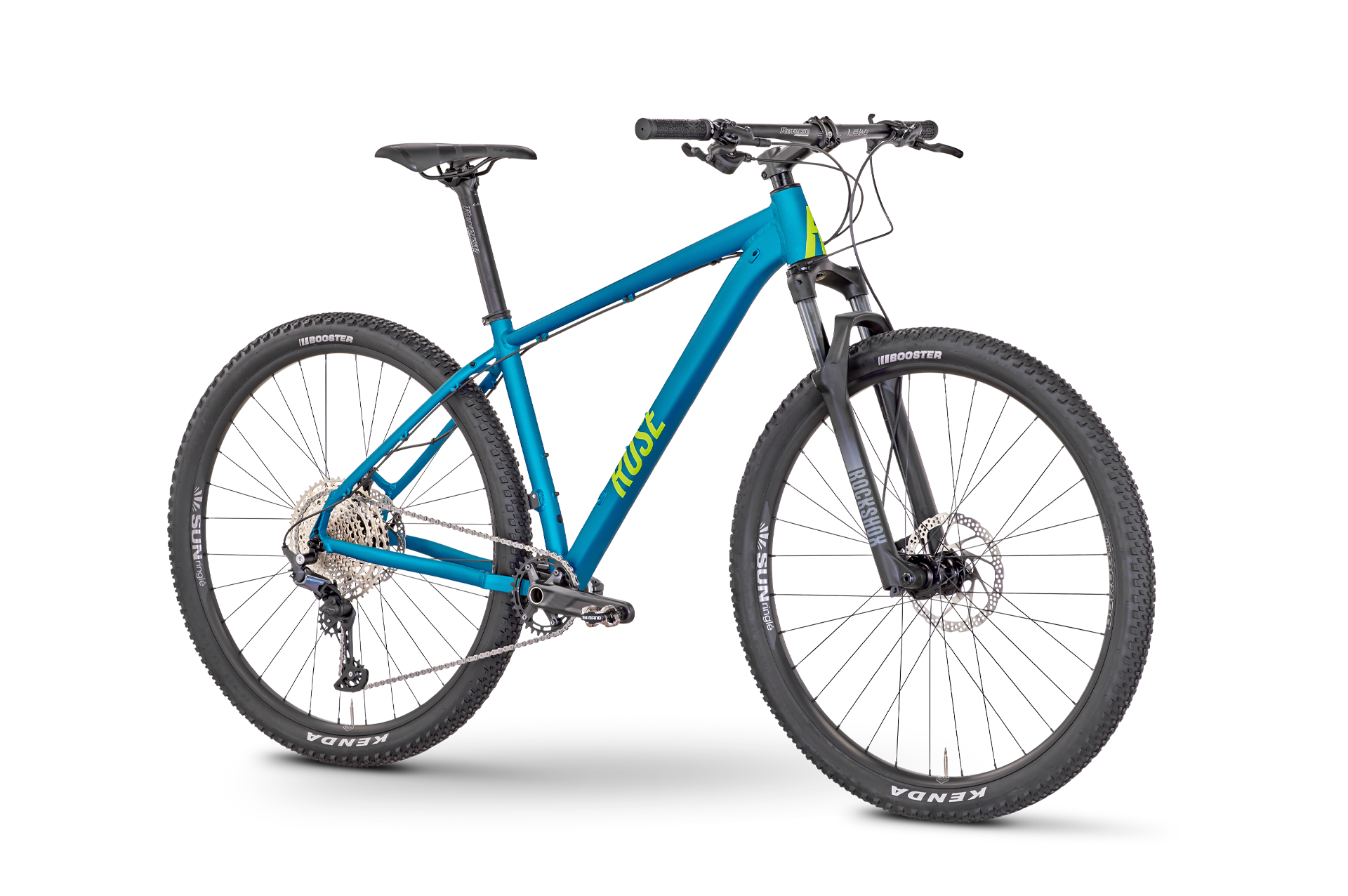)
)
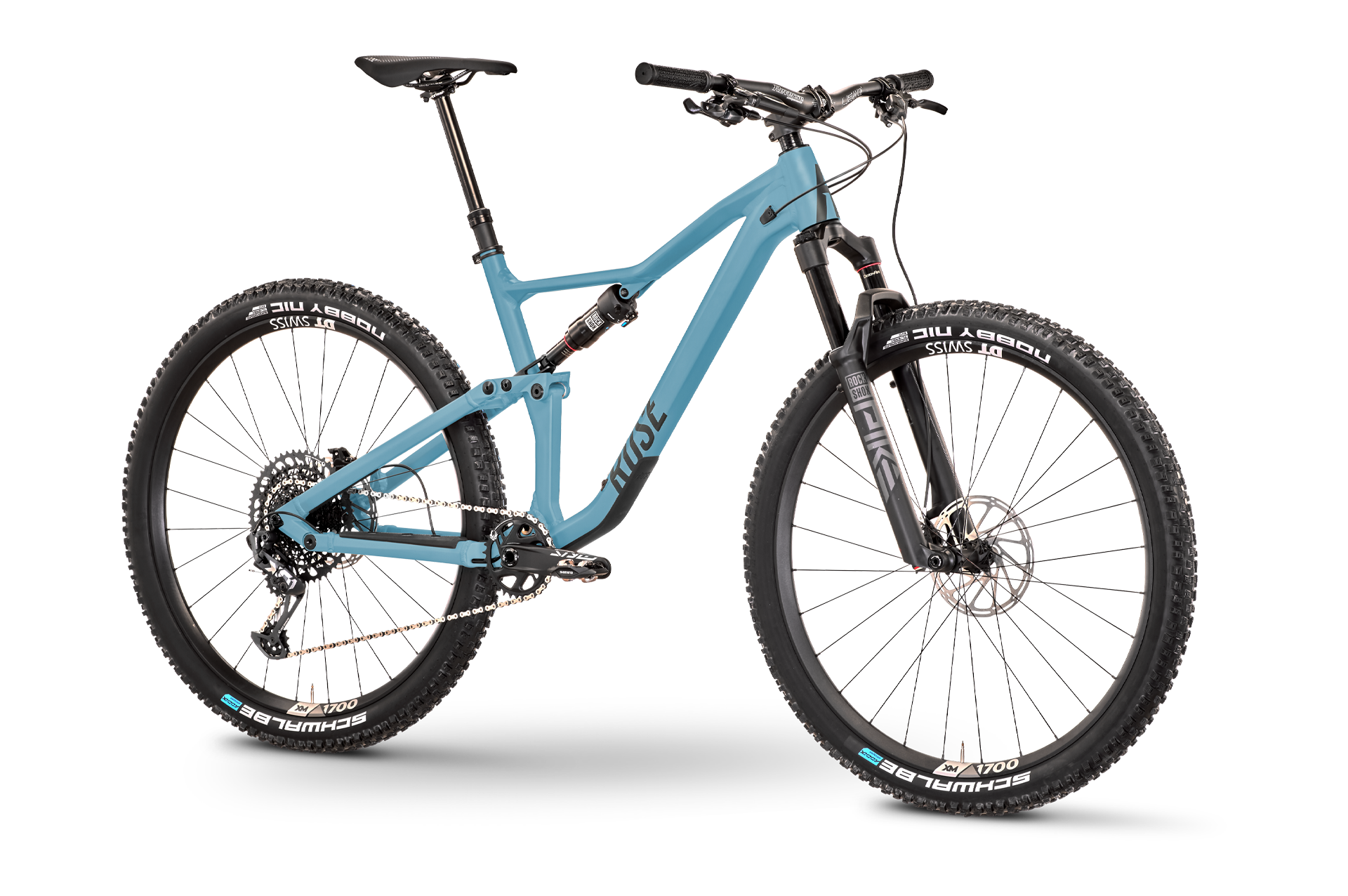)
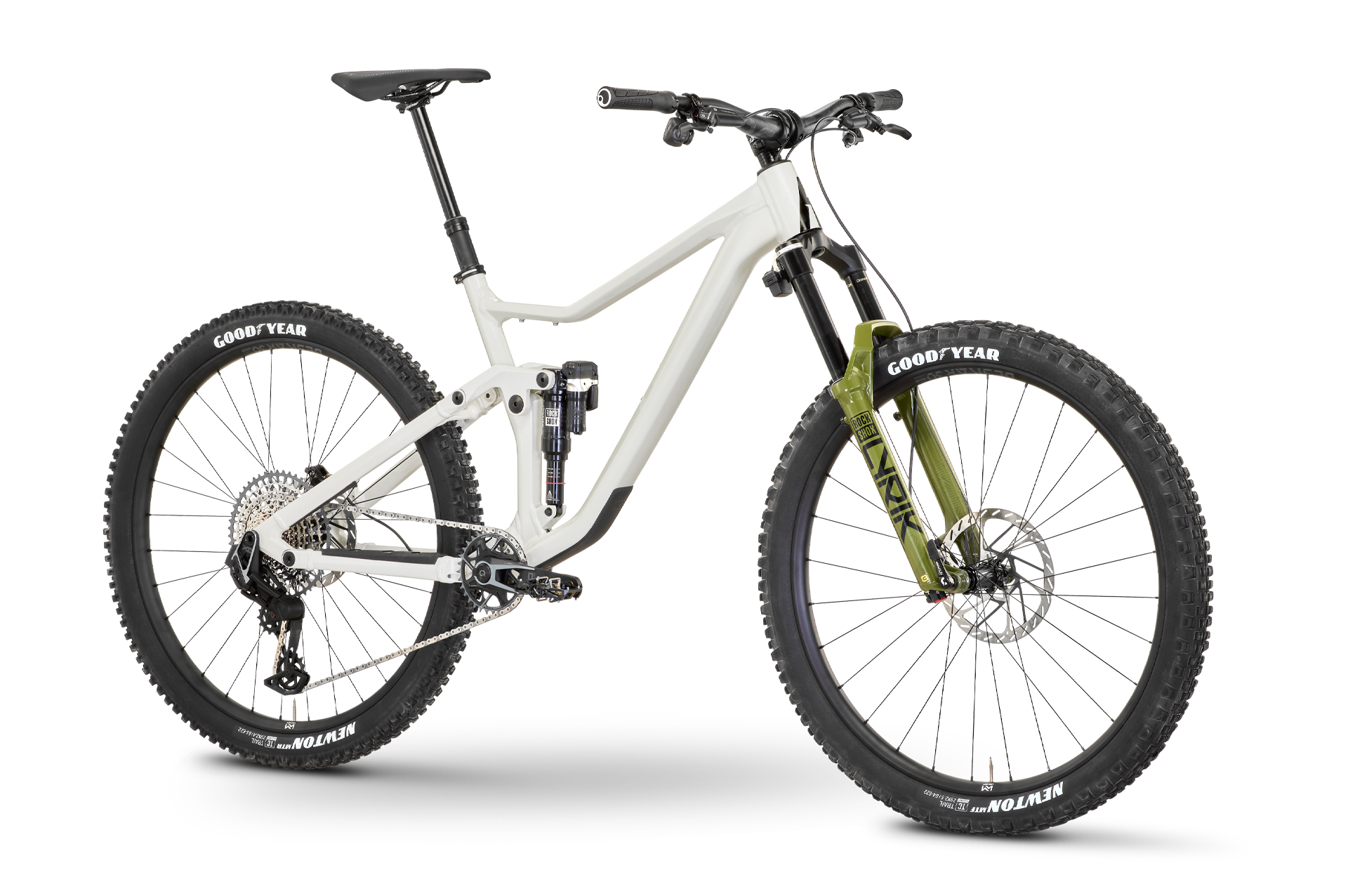)
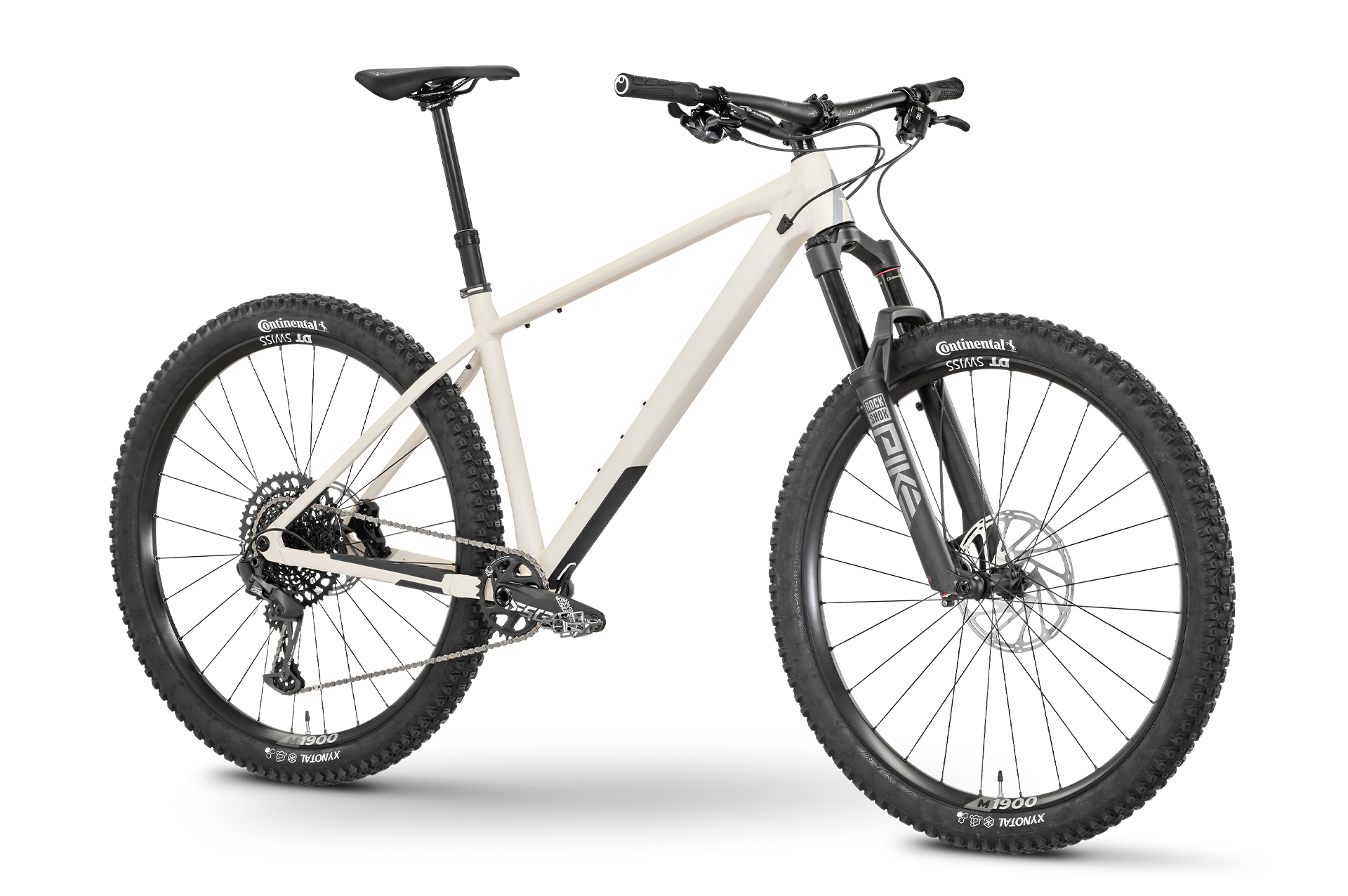)
)
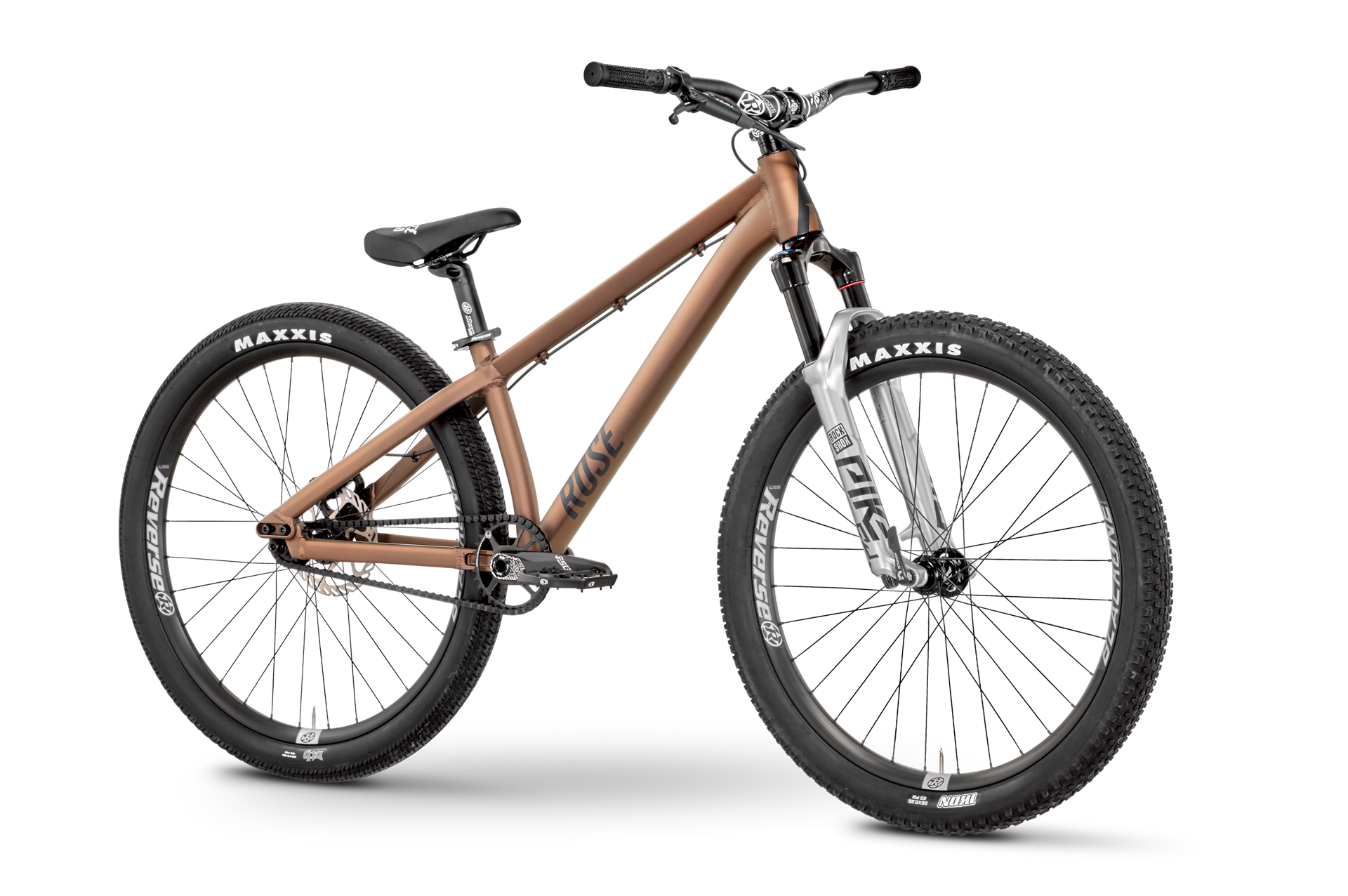)
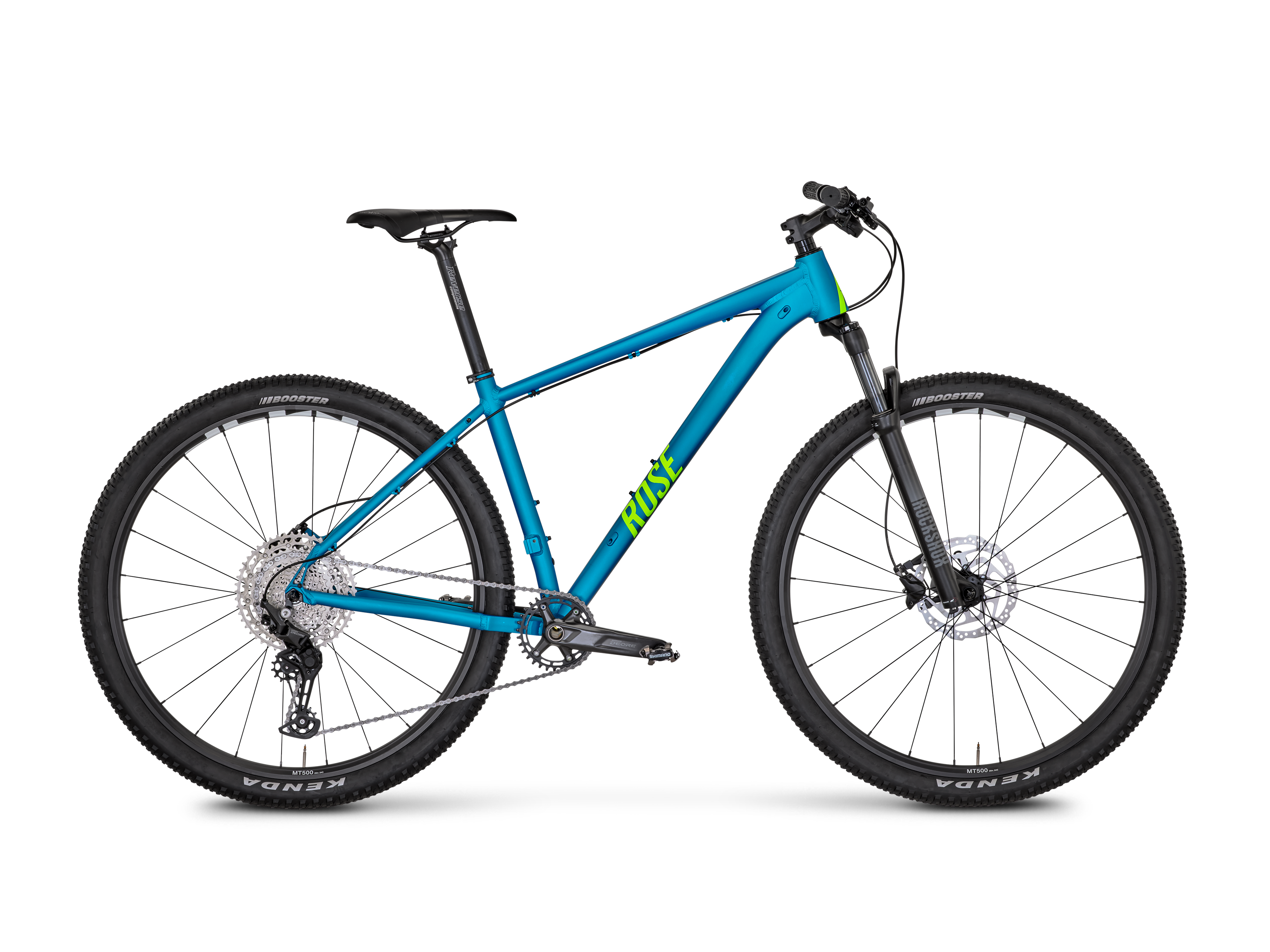)
)
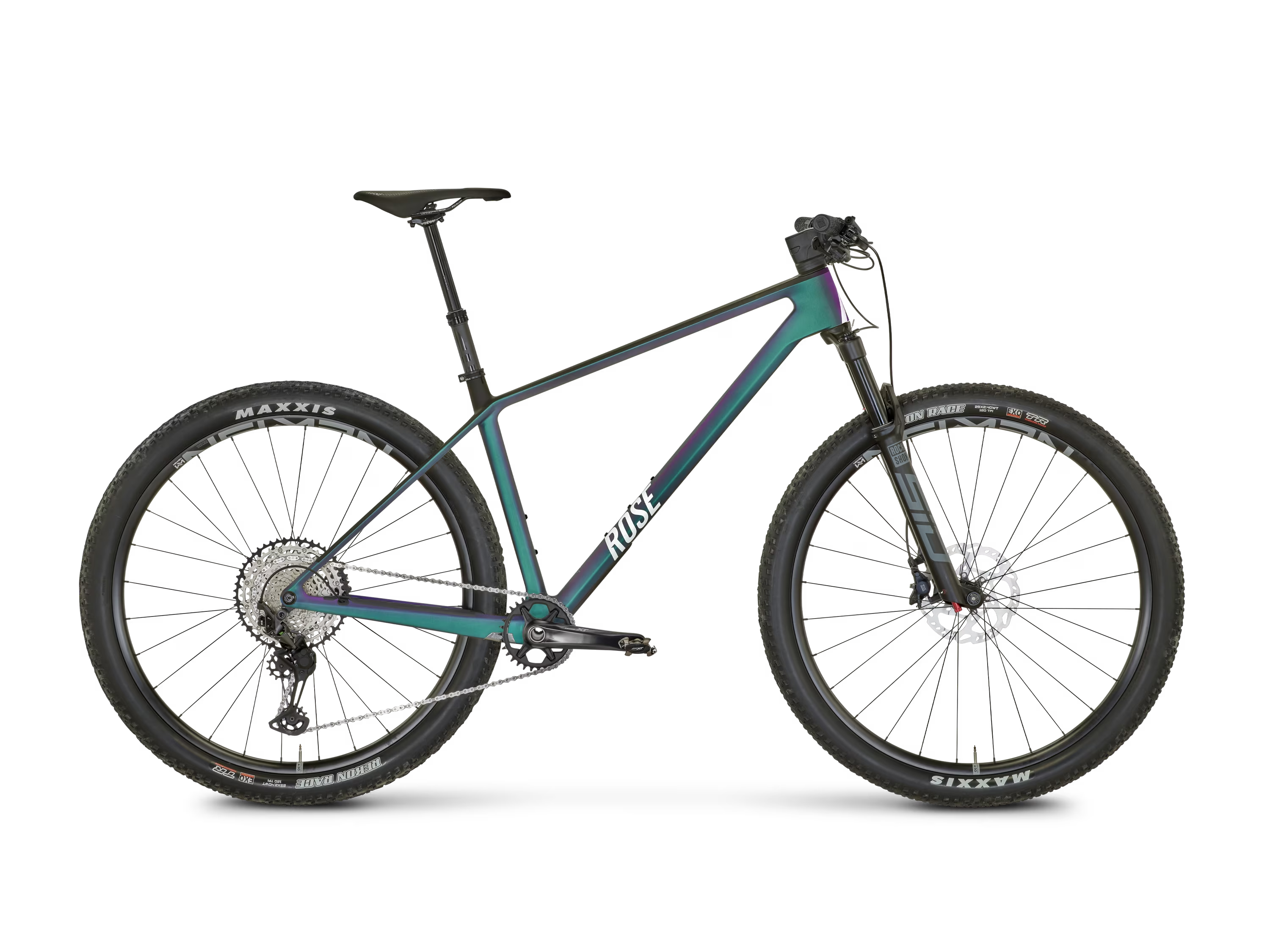)
)
)
)
)
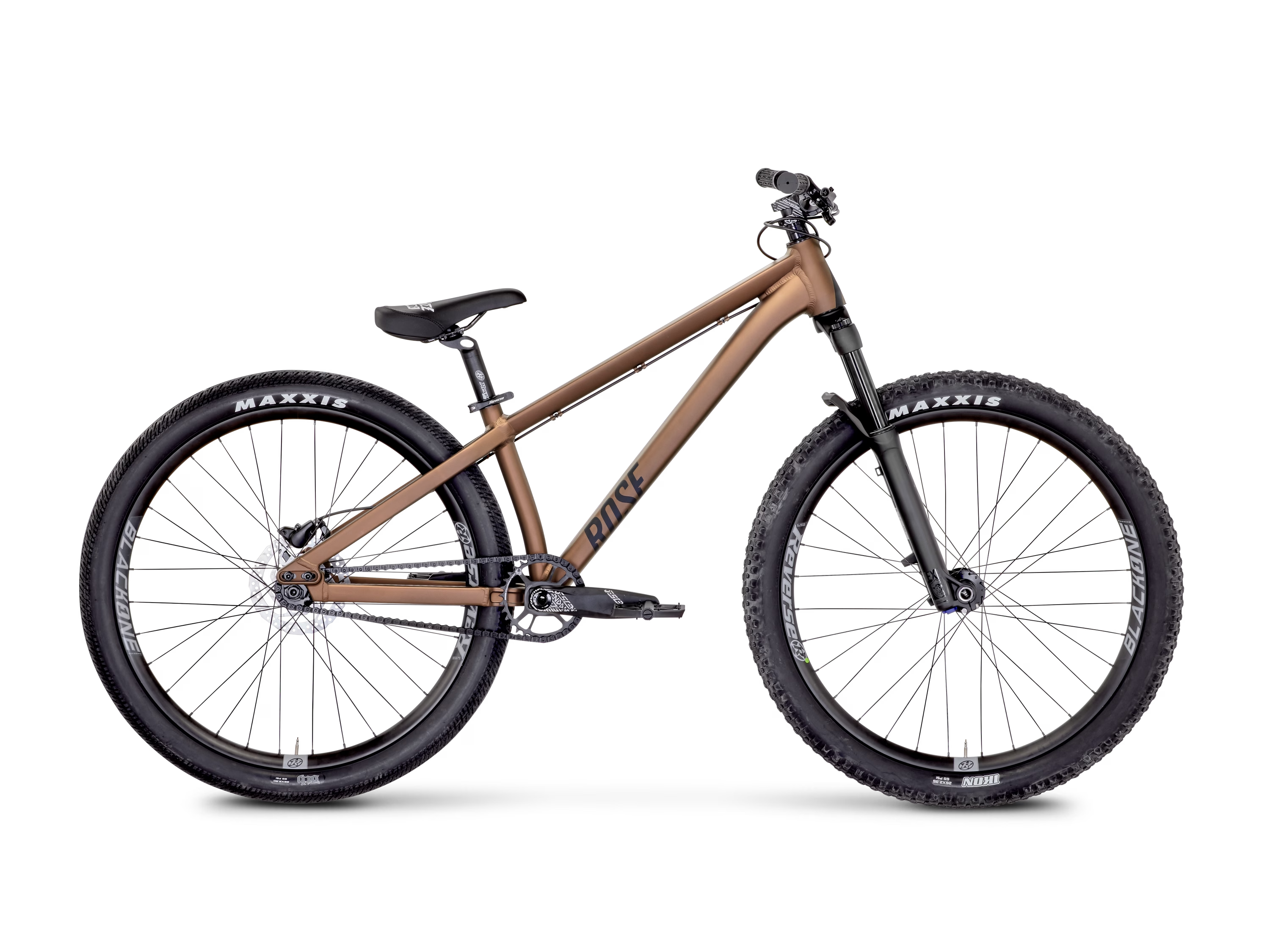)